The C6 guitar chord adds a rich, jazzy flavor to your playing. As part of the major chord family, the C6 is built upon the foundational C major chord but with an added sixth interval, giving it a unique and sophisticated sound. In this comprehensive guide, we’ll explore everything you need to know to master the C6 chord, from its construction and theory to various positions on the fretboard and how to use it musically.
Unpacking the C6 Chord: Notes and Theory
To truly understand the C6 chord, let’s delve into its construction. The C6 chord comprises four notes: C, E, G, and A. These notes are derived from the 1st, 3rd, 5th, and 6th intervals of the C major scale.
- Root (1st): C
- Major Third (3rd): E
- Perfect Fifth (5th): G
- Major Sixth (6th): A
 C 6 position 1 guitar chord diagram
C 6 position 1 guitar chord diagram
The “6” in C6 signifies the addition of this major sixth interval. This single note transforms the bright and cheerful C major into a chord with a slightly sweeter, more complex, and often described as ‘jazzy’ or ‘melodic’ quality. If you’re new to chord notations and want to understand how chords are named and categorized, exploring resources on guitar chord notation will be beneficial. Furthermore, to grasp the underlying principles of chord construction, understanding how chords are built using intervals is essential. This knowledge will empower you to understand not just the C6, but all chords you encounter.
The C6 chord belongs to the sixth (6) guitar chords family, a group of chords known for their distinctive and versatile sound. Mastering the C6 is a fantastic stepping stone to exploring the wider world of sixth chords and their applications in various musical styles.
Exploring C6 Chord Positions on the Guitar Fretboard
The beauty of the guitar lies in the multiple ways you can play the same chord. The C6 chord is no exception, with numerous positions available across the fretboard. Below, we’ll explore various positions, categorized for ease of learning. Chord diagrams are presented from easiest to more challenging, helping you progressively build your C6 chord vocabulary. Remember to familiarize yourself with how to read chord diagrams to effectively utilize these visual aids. If barre chords pose a challenge, our Bar Chords Tips tutorial offers valuable techniques to master them. For a text-based representation of these chord shapes, you can visit our accessible chords page.
Movable C6 Chord Positions
Movable chord shapes are incredibly useful as they allow you to play the same chord voicing in different keys simply by shifting the shape up or down the fretboard.
Position 1 (Movable Shape)
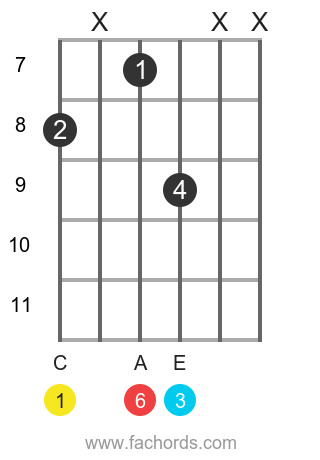 C 6 position 7 guitar chord diagram
C 6 position 7 guitar chord diagram
Position 2 (Movable Shape)
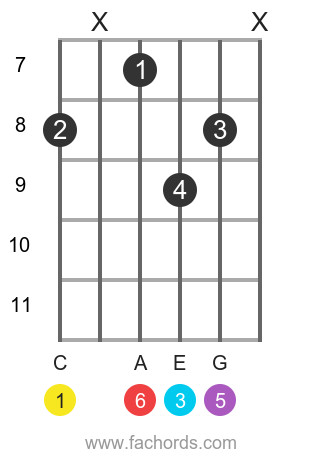 C 6 position 4 guitar chord diagram
C 6 position 4 guitar chord diagram
Position 3 (Movable Shape)
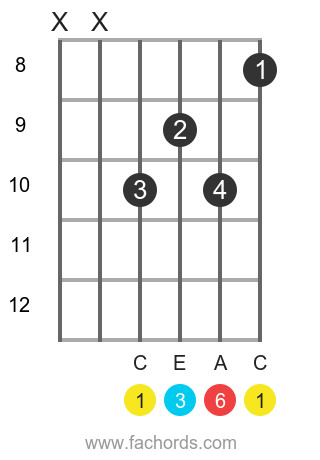 C 6 position 5 guitar chord diagram
C 6 position 5 guitar chord diagram
Position 4 (Movable Shape)
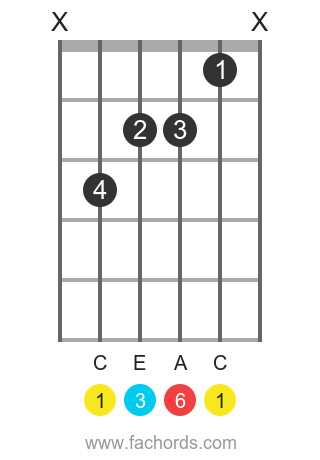 C 6 position 8 guitar chord diagram
C 6 position 8 guitar chord diagram
Open Position C6 Chord
Open position chords utilize open strings, often making them easier to play and providing a resonant, full sound.
Position 5 (Open Position)
 C 6 position 1 guitar chord diagram
C 6 position 1 guitar chord diagram
Barre Chord C6 Positions
Barre chords, while initially challenging, are essential for expanding your chord vocabulary and playing in various keys. These C6 barre chord shapes are also movable.
Position 6 (Barre Chord Shape)
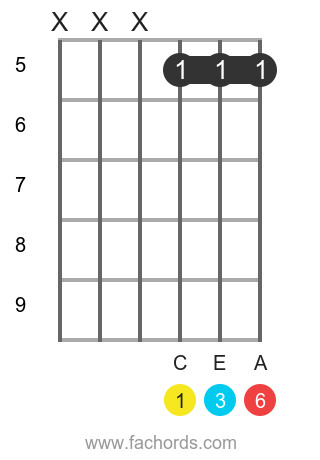 C 6 position 6 guitar chord diagram
C 6 position 6 guitar chord diagram
Position 7 (Barre Chord Shape)
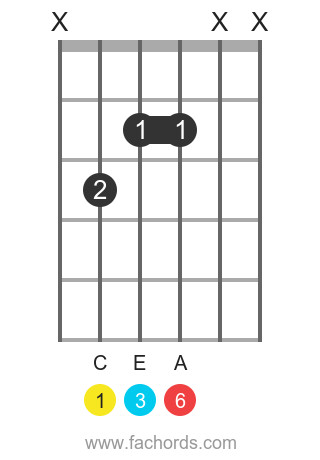 C 6 position 9 guitar chord diagram
C 6 position 9 guitar chord diagram
Position 8 (Barre Chord Shape)
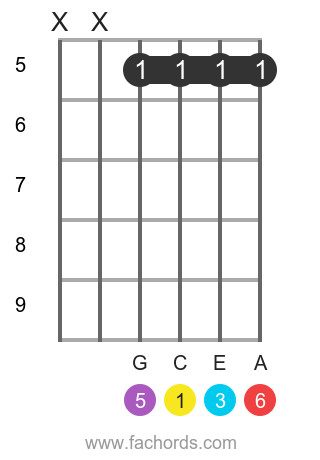 C 6 position 10 guitar chord diagram
C 6 position 10 guitar chord diagram
Position 9 (Barre Chord Shape)
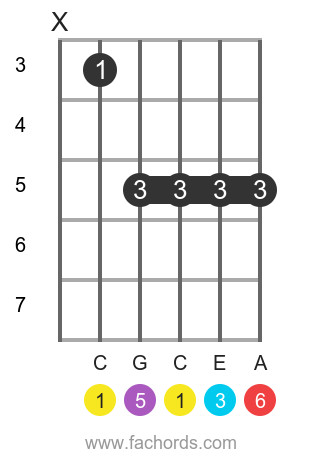 C 6 position 2 guitar chord diagram
C 6 position 2 guitar chord diagram
Position 10 (Barre Chord Shape)
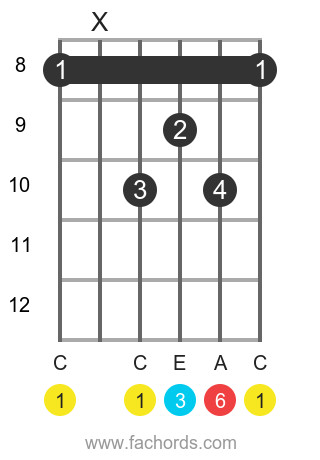 C 6 position 3 guitar chord diagram
C 6 position 3 guitar chord diagram
Explore our extensive all guitar chords online library for even more chord shapes and variations. For offline practice, you can download our Free Guitar Chords Chart Pdf for a handy reference guide.
Voicing and Creativity on the Fretboard
Beyond these standard positions, the fretboard offers endless possibilities for creating your own C6 chord voicings. The fretboard map below displays the notes of the C6 chord across the fretboard. By selecting combinations of these notes, you can craft unique and interesting C6 chord voicings in any area of the neck. Experiment with different combinations; some will sound richer and more resonant than others. Let your ear be your guide!
[Fretboard map image from original article – This section seems to refer to an interactive fretboard map which is not present in the article. It needs to be re-evaluated if a static image can replace it or if this section should be adapted.]
Feel free to experiment with C6 chords with different root notes as well. We offer guides for D 6, E 6, F 6, G 6, A 6, B 6, C#6, D#6, F#6, G#6, A#6, Ab6, Bb6, Db6, Eb6, and Gb6 chords to further expand your musical palette.
Conclusion
The C6 guitar chord is a valuable addition to any guitarist’s toolkit. Its unique sound and versatility make it suitable for a wide range of musical styles, from jazz and blues to pop and folk. By learning the various positions and understanding its theoretical construction, you’ll be well-equipped to incorporate the C6 chord into your playing and songwriting. Practice these shapes, experiment with different voicings, and most importantly, listen to how the C6 chord enhances your music. Happy playing!
